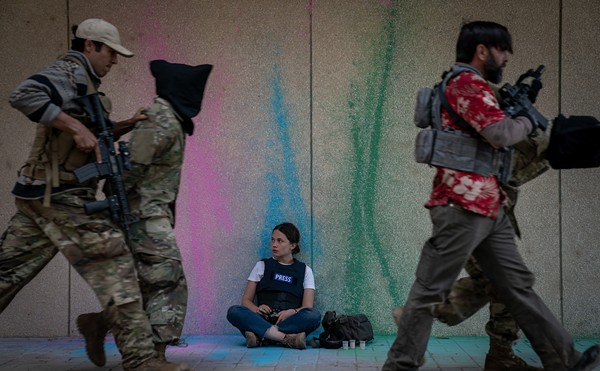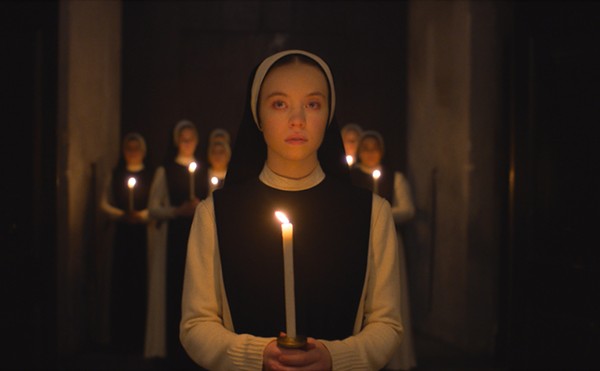Brothels is a beautiful, wrenching film, in which a concerned Westerner enters a dark and hidden world and, instead of merely observing it -- or publishing it through her photographs -- endeavors to change it. Zana Briski, a photographer based in New York, initially entered the red-light district of Calcutta with the intent to photograph the women who work there. On and off for several years, she lived with the women, observing them in their tiny hovels, sitting with them as they killed time between customers. Eventually the women warmed to Briski, but it was the children -- immediately trusting and curious -- who moved her to action. Before long the photographer abandoned her own project, purchased twenty point-and-shoot cameras and set about teaching the brothel's children to shoot photographs of their own.
The results are extraordinary. All of the students take to the work -- some with sheer joy, others with curiosity, and several with a profound and precocious maturity of purpose. They document everything that surrounds them -- all of the poverty, squalor, violence, desperation and heart-cracking beauty of survival in the face of abject misery. The film spends time with each of eight children and, as it does, pauses to show a portfolio of that child's work. The effect is both respectful and penetrating: The children are not merely subjects but also artists. We travel into their difficult, difficult lives, and we see what they can do.
And oh, their lives. What to say about their lives? Though it's a painful word to use, Briski admits that the children are doomed. They have no options. Almost every family lacks the money to send its children to school; even if there were money, schools won't take children whose parents are criminals. (Prostitution is illegal in India, as is selling drugs, which many fathers do.) With no education, almost every girl is destined to join "the line," i.e., to work as a prostitute. Some are sold by their parents, either into marriage or prostitution, before they reach puberty. For the rest, it's only a matter of time. Meanwhile, a few boys manage to study at state schools, while others head toward drugs and violence. They all live in tiny rooms, usually one to a family, with nothing but flimsy fabric curtains between them, the other families in the brothels and the rough men who come for sex.
Briski could have let this be. Instead, she takes action. Partway into the film, she decides to get the children out of the brothels by enrolling them in boarding school. At first it seems hopeless, as no school will accept the children of prostitutes. Yet step by step, inch by aching inch, Briski keeps trying. She sets about acquiring the paperwork for each of the children in her class, navigating India's Borgesian bureaucracy with bravery and (more appropriately) astonishing patience. At the same time, she arranges an exhibit of the students' work in New York, selling the photographs to earn money for tuition. The World Press Photo Foundation takes a particular interest in Avijit, a wildly talented boy with deep wisdom about himself and his world, and invites him to serve on the Children's Jury in Amsterdam. He wants to go, and his family will allow it, but procuring a passport proves excruciating. The attempt drives Briski to tears.
Born into Brothels is a gorgeous, riveting work of documentary. It travels into the world of the children, gives them purpose and art and then takes us on the co-director's quest to rescue them from hopelessness. The photography, both still and moving, haunts as well as stuns, never flinching before a universe of pain. Briski and Kauffman combine a richly textured, evocative score with slow motion and montage to capture emotional scenes, such as a trip to the beach in which the children explode into joy, marveling at the landscapes, cradling their cameras high against their chests to avoid the water. Then, later, the music shifts, keening with sorrow as we watch the students return, tired and spent, to the crowded destitution of their homes.
As Avijit said of the photo he judged, it isn't easy to look at these children or at their deeply troubled families. They are poor, they live in squalor, and their suffering is written over every inch of the frame. But they are beautiful, and true, and so is this film.





